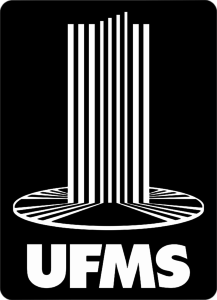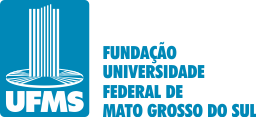Use este identificador para citar ou linkar para este item:
https://repositorio.ufms.br/handle/123456789/1729Registro completo de metadados
| Campo DC | Valor | Idioma |
|---|---|---|
| dc.creator | Sanches, Vítor Quadros Altomare | - |
| dc.creator | Gomes, Mariuciy Menezes de Arruda | - |
| dc.creator | Passos, Fernando de Camargo | - |
| dc.creator | Graciolli, Gustavo | - |
| dc.creator | Ribas, Augusto Cesar de Aquino | - |
| dc.date.accessioned | 2013-06-19T15:15:37Z | - |
| dc.date.available | 2021-09-30T19:56:57Z | - |
| dc.date.issued | 2012 | - |
| dc.identifier.citation | CARDOSO, Beatriz Daruj; GIL, Elis de Almeida; GONDÉ, Valéria Gil. Modelos de análise linguística. São Paulo: Contexto, 2009. ISBN 9788572444170 (Resenha) | pt_BR |
| dc.identifier.uri | https://repositorio.ufms.br/handle/123456789/1729 | - |
| dc.description.abstract | Área de vida é a área usada por um animal em suas atividades diárias. Estudos de área de vida oferecem dados sobre os sistemas reprodutivos e comportamento territorial das espécies. Nosso objetivo foi estimar a área de vida de Didelphis albiventris (Lund 1840) na ilha Mutum, no rio Paraná, Brasil. O estudo foi realizado em 2008 de março a outubro em uma grade de 19,20 ha. Esta ilha é parte da área de proteção de ilhas e várzeas do rio Paraná e sua vegetação é composta por floresta estacional semidecidual aluvial sazonal com clima subtropical úmido. O esforço amostral foi de 3.360 armadilhas-noite resultando em 152 capturas de Didelphis albiventris (Lund 1840). Foram capturados 41 indivíduos nas 42 estações compostas por uma armadilha no solo e a dois metros de altura. A maioria dos animais foi capturada no solo, independente de idade ou sexo. Quatro fêmeas e cinco machos foram recapturados pelo menos cinco vezes e foram usados para calcular a área de vida mediante método de polígono mínimo convexo. A área de vida média estimada foi de 2,33 ha ± 2,32, similar às estimativas previamente descritas por outros métodos, sugerindo que o tamanho da grade de captura, maior que a usualmente empregada em estudos de marcação-recaptura com esta espécie, não subestimou as áreas de vida. Evidências da relação entre a área de vida e massa corporal dos indivíduos foram observadas. Sobreposição das áreas de vida (média = 33,74%) ocorreu entre machos, entre fêmeas e de machos com fêmeas, o que pode ser relacionado a um sistema de acasalamento promíscuo e territorialidade de fêmeas. ABSTRACT - Home-range is the area used by an animal in its daily activities. Home-range studies provide data on species mating systems and territorial behavior. Our main goal was to estimate the Didelphis albiventris (Lund 1840) home-range in Mutum Island, Paraná River, Brazil. The study was carried out in 2008 from March to October on a 19.20 ha grid. The island is part of the Parana River Islands and Floodlands Federal Environmental Protection Area, with vegetation composed by Alluvial Semideciduous Seasonal Forest in a region of Subtropical Wet climate. The sampling effort was 3,360 traps-night resulting in 152 Didelphis albiventris (Lund 1840) captures. Forty-one Didelphis albiventris (Lund 1840) individuals were captured in 42 capture stations, composed by a trap placed on the floor and another in understory (2 m high). The animals were mostly terrestrial, independently of age or sex. Four females and five males, which were recaptured at least five times, were used to calculate home-range using the minimum convex polygon method. The mean home-range estimate was 2.33 ± 2.32 ha, similar to previous estimates provided by other methods, suggesting that our capture grid area, that was larger than usually applied for mark-capture studies for this species, have not underestimated the home-ranges. Evidences of the relation between individual home-range area and body mass were observed. Home-range overlaps occurred between males, females and males with females; the average overlap was 33.74%, which may be related to a promiscuous mating system, and suggests female territoriality. | pt_BR |
| dc.description.abstract | ABSTRACT - Home-range is the area used by an animal in its daily activities. Home-range studies provide data on species mating systems and territorial behavior. Our main goal was to estimate the Didelphis albiventris (Lund 1840) home-range in Mutum Island, Paraná River, Brazil. The study was carried out in 2008 from March to October on a 19.20 ha grid. The island is part of the Parana River Islands and Floodlands Federal Environmental Protection Area, with vegetation composed by Alluvial Semideciduous Seasonal Forest in a region of Subtropical Wet climate. The sampling effort was 3,360 traps-night resulting in 152 Didelphis albiventris (Lund 1840) captures. Forty-one Didelphis albiventris (Lund 1840) individuals were captured in 42 capture stations, composed by a trap placed on the floor and another in understory (2 m high). The animals were mostly terrestrial, independently of age or sex. Four females and five males, which were recaptured at least five times, were used to calculate home-range using the minimum convex polygon method. The mean home-range estimate was 2.33 ± 2.32 ha, similar to previous estimates provided by other methods, suggesting that our capture grid area, that was larger than usually applied for mark-capture studies for this species, have not underestimated the home-ranges. Evidences of the relation between individual home-range area and body mass were observed. Home-range overlaps occurred between males, females and males with females; the average overlap was 33.74%, which may be related to a promiscuous mating system, and suggests female territoriality. | pt_BR |
| dc.language.iso | eng | pt_BR |
| dc.publisher | Biota Neotropica | pt_BR |
| dc.rights | Acesso Aberto | pt_BR |
| dc.subject | Gambás | pt_BR |
| dc.subject | Fauna - análise | pt_BR |
| dc.subject | Hábitat - análise | pt_BR |
| dc.subject | Opossums | pt_BR |
| dc.subject | Fauna - analysis | pt_BR |
| dc.subject | Habitat - analysis | pt_BR |
| dc.title | Home-range and space use by Didelphis albiventris (Lund 1840) (Marsupialia, Didelphidae) in Mutum Island, Paraná river, Brazil | pt_BR |
| dc.title.alternative | Área de vida e uso do espaço por Didelphis albiventris (Lund 1840) (Marsupialia, Didelphidae) na ilha Mutum, rio Paraná, Brasil | pt_BR |
| dc.type | Artigo de Periódico | pt_BR |
| dc.identifier.doi | http://dx.doi.org/10.1590/S1676-06032012000400004 | - |
| Aparece nas coleções: | CCBS - Artigos publicados em periódicos | |
Arquivos associados a este item:
| Arquivo | Descrição | Tamanho | Formato | |
|---|---|---|---|---|
| Home-range and space.pdf | 453,95 kB | Adobe PDF |  Visualizar/Abrir |
Os itens no repositório estão protegidos por copyright, com todos os direitos reservados, salvo quando é indicado o contrário.

